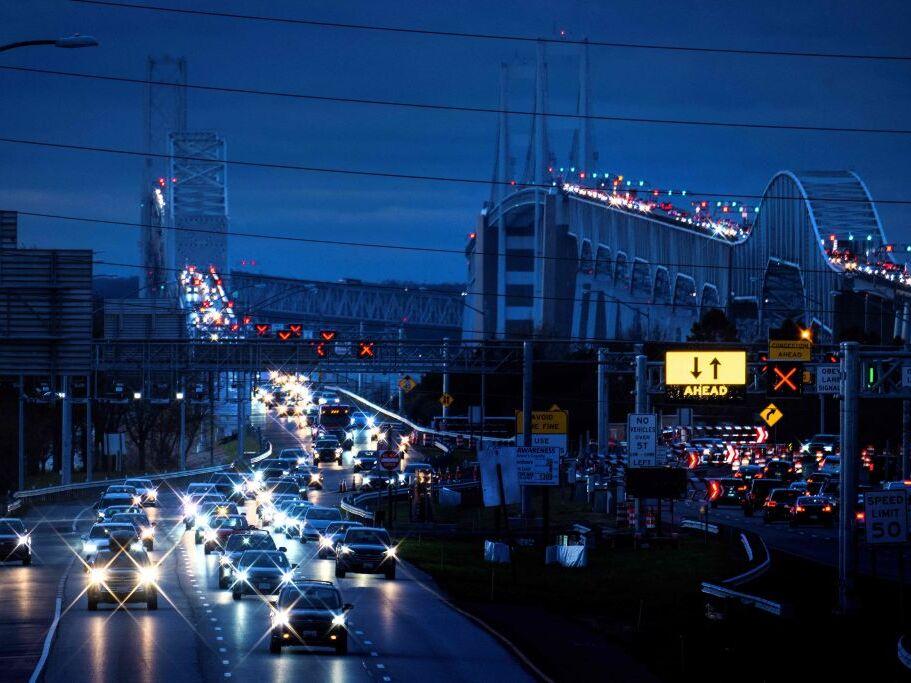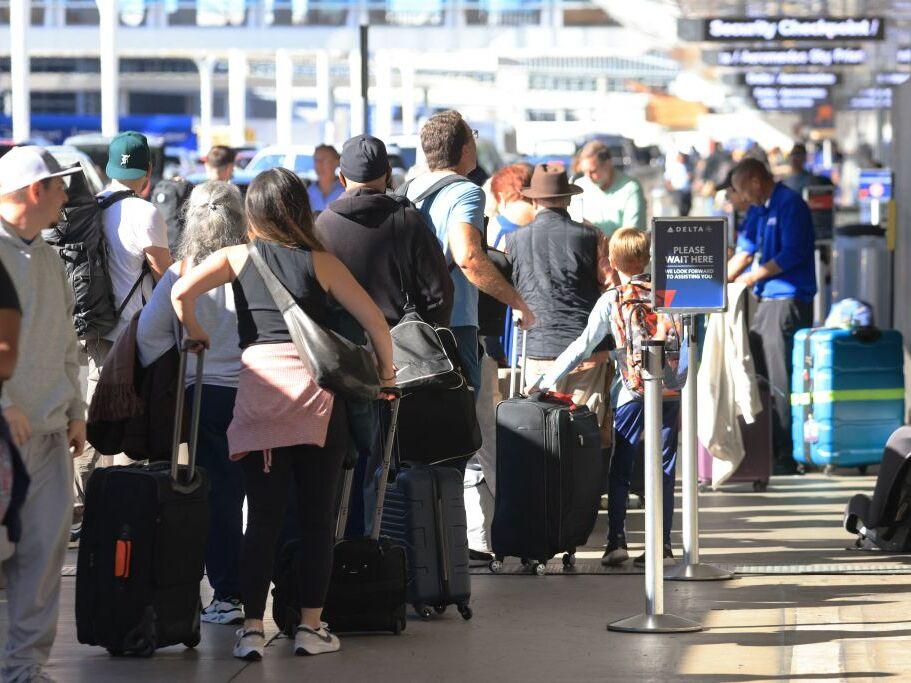Section Branding
Header Content
Record number of people expected to travel for Thanksgiving
Primary Content
Roads, airports and even cruise terminals could be more crowded this year as nearly 80 million people are expected to travel during Thanksgiving, according to AAA.
Stacey Barber, vice president of AAA Travel, on Monday said Thanksgiving is the busiest holiday for travel and new records are expected to be set in all forms of travel, including cruising.
"Americans reconnect with family and friends over Thanksgiving, and travel is a big part of that," Barber said in a statement. "AAA continues to see travel demand soar post-pandemic with our members looking for new adventures and memorable vacations."
Last year, an estimated 78 million people traveled more than 50 miles during the Thanksgiving holiday, which the AAA consider to be record that exceeded a forecast of 55 million travelers. The organization says it has been tracking holiday travel since 2000 and this year's projections are for a seven-day period from the Tuesday before and the Monday after Thanksgiving — compared to previous years that tracked five days, from Wednesday to Sunday.
Lower gas prices this year may influence Americans to hit the roads for the holiday, with the national average at $3.07 as of Monday, and prices that could fall below $3 a gallon before Thanksgiving for the first time since 2021, AAA says. That would be a nearly 30 cent decrease from gas prices Thanksgiving last year, when the national average was $3.32.
AAA projects that nearly 72 million people will travel by car over the holiday — a little over 1 million more on the road than last year and also more than before COVID-19 pandemic began, when 70.6 million traveled by car for Thanksgiving.
About 6 million Americans will travel by plane within the U.S., a 2% increase from last year and nearly 11% increase since 2019, according to the organization. It costs more to travel by air, with travelers paying 3% more for flights within the U.S. while international flight costs are down 5%, AAA booking data shows. Bookings for international flights are up 23% for the holiday compared to last year, AAA also said.
In an effort to meet that demand, U.S. airlines will provide 150,000 more seats each day than Thanksgiving last year, says Airlines For America, a group that represents major airlines such as Delta.
"We expect this Thanksgiving season to be the busiest on record, and U.S. airlines have been preparing for months to get travelers and cargo safely and efficiently to their destinations," Rebecca Spicer, senior vice president of communications for Airlines for America said in a statement.
There's also likely to be a jump in other modes of transportation, with nearly 2 million Americans traveling by either train, buses or cruises. That's an 18% increase from 2019 and nearly 9% increase from last year, according to AAA. Demand for cruises has been particularly high, with cruise bookings — both international and domestic — up 20% compared to last Thanksgiving.
Be careful when making travel plans
More Americans traveling could lead to longer lines at security checkpoints for those traveling by airplane and longer times in the car if driving.
The worst times to hit the road for the holiday will be Monday and Wednesday of Thanksgiving week between 1 p.m. and 5 p.m. and 1 p.m. to 7 p.m. on Tuesday, according to INRIX, a transportation analytics firm. The best times are before 10 a.m. and 11 a.m. on those days, with minimal travel expected on Thanksgiving Day.
When returning home from Thanksgiving by car, the best time to travel will be after 1 p.m. on Friday and before 1 p.m. on Saturday and Sunday, INRIX says. For those returning by car on Monday, the best times to drive are before 8 a.m. and after 7 p.m.
The worst times to drive will between 7 a.m. and 10 a.m. on Friday, 4 p.m. to 8 p.m. on Saturday, and noon to 6 p.m. on Sunday. On Monday, 9 a.m. to 6 p.m.is also expected to be busy.
Bob Pishue, a transportation analyst for INRIX, says drivers should check local news alerts follow apps that monitor traffic to avoid "major delays."
"This is especially important for drivers in metropolitan areas like Boston, New York, LA, Seattle, and Washington, D.C., where traffic is expected to be more than double what it typically is on a normal day," Pishue said in a statement.
Americans could also face delays because of weather depending on where they live and their holiday destinations.
While it's too early to determine exact storm systems for Thanksgiving week, weather patterns indicate snowy weather that could impact the northern Rockies and northern plains, according to the National Weather Service.


